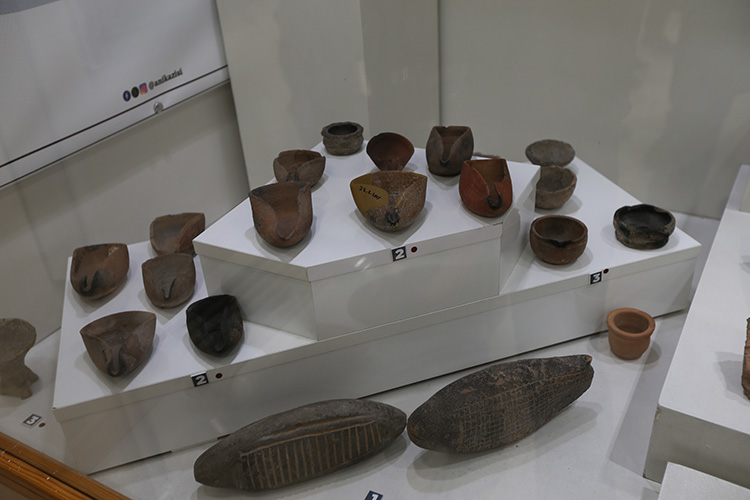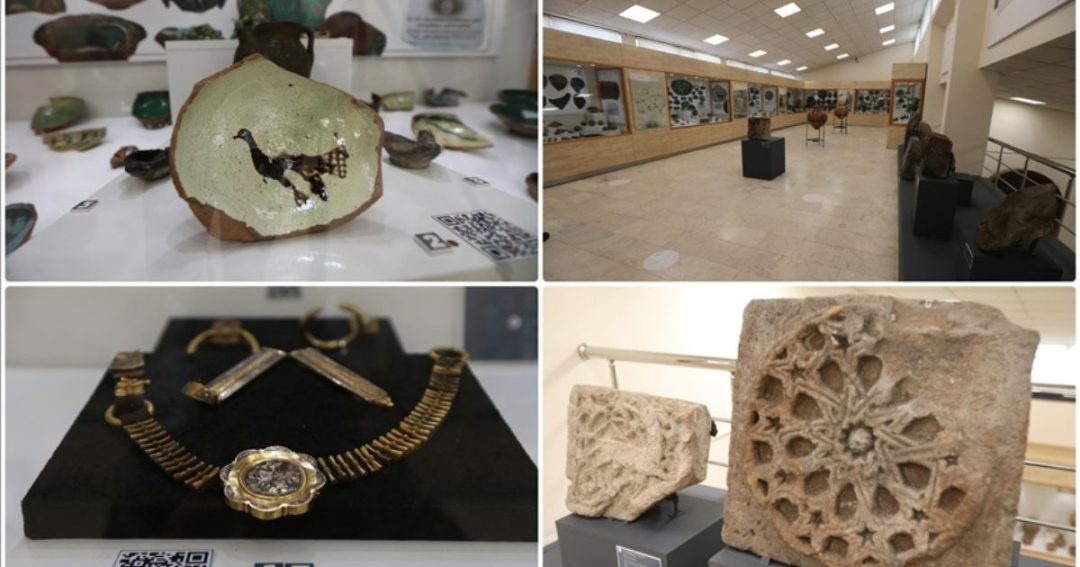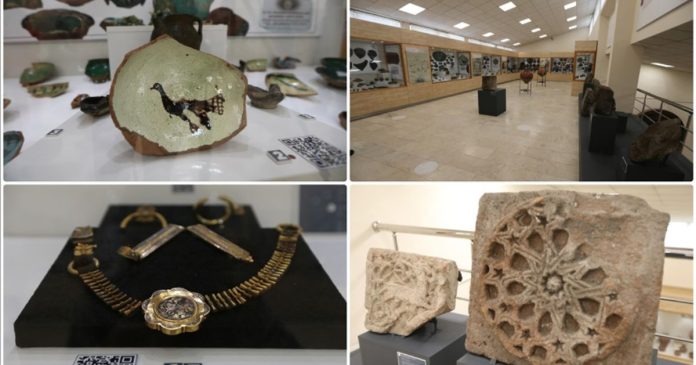As part of the “102 Exhibitions in the 102nd Year” project, the Turkish General Directorate of Cultural Heritage and Museums launched a new exhibition in Kars called The Story of Ani. The Kars Museum of Archaeology and Ethnography is hosting the exhibit.
The museum is displaying 196 of its 244 registered archaeological and ethnographic artifacts to the public for the first time. Unearthed from the ancient site of Ani, these items span from 5000 BCE to the present. They include gold, silver, bronze, glass, stone, and metal objects like rings, earrings, necklaces, bracelets, headpieces, and everyday tools.

Serkan Gedük, Acting Head of the Department of Museums at the Ministry of Culture and Tourism of Türkiye, emphasized that the exhibition showcases cultural heritage artifacts from archaeological excavations dating back to 1892, presented in chronological order. He explained, “One of the main goals of these temporary exhibitions is to display artifacts from museum archives in new ways—rotating them to share their stories from different perspectives.” In this respect, the exhibition in Kars is particularly special. We invite everyone to come and see it.”

Ani: A 5,000-Year-Old City
Associate Professor Dr. Muhammet Arslan, head of the Ani excavations, highlighted Ani’s importance in Turkish-Islamic history in Anatolia. As a UNESCO World Heritage Site, Ani remains the focus of scientific excavations, restoration, conservation, and landscape work.
Dr. Arslan added, “We’ve launched the 2025 excavation season as part of the Ministry’s Legacy for the Future project and national investment programs. This exhibition helps promote Ani to a broader audience, encouraging public engagement and highlighting the cultural value of the artifacts. Through this collaborative exhibition with Kars Museum under the ‘102 Exhibitions’ initiative, we aim to increase awareness of Ani’s legacy.”
He explained that Ani has been continuously inhabited since the Late Chalcolithic period, about 5,000 years ago. The displayed artifacts reflect everyday life over these millennia.
Hakim Aslan, Director of the Kars Archaeology and Ethnography Museum, noted that the artifacts span excavations from 1892 to 2024. He emphasized the exhibit’s significance, pointing out that 196 of the 244 pieces are on public display for the first time.

